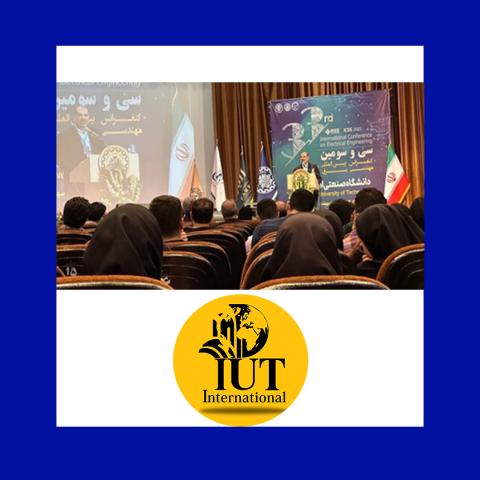
The 33rd Iranian Electrical Engineering Conference ended in Isfahan University of Technology after three days of an intensive scientific and executive program with a large attendance of academics, industrialists, and researchers. The scientific and executive directors of the conference evaluated this period as a turning point in the return of national scientific events after the COVID-19 pandemic.
Dr. Farid Sheikholeslam, the scientific secretary of the conference, referring to the impressive reception of the country's scientific community for this event, said: "A total of 503 articles were received from universities and researchers across the country, and after careful judging, 269 articles were accepted; 191 articles were presented in the form of lectures and 57 articles were presented in the form of posters."
He added: "In the judging process, the capacity of 570 faculty members from various universities in the country was utilized. Each article was referred to an average of more than 6 referees, and nearly 1,400 referees were consulted, resulting in a final decision with an average of at least three valid referees for each article."
Sheikholeslam considered the strong presence of first-rate universities as one of the characteristics of this course and said: "Amirkabir University of Technology, Isfahan University of Technology, Tehran University of Technology, Khajeh Nasir University of Technology, Tabriz University of Technology, Sharif University of Technology, and University of Science and Technology had the highest participation in submitting articles. Articles from 29 provinces of the country and several universities abroad were also received." According to him, during this session, more than 40 members of the Scientific Advisory Committee from 10 different countries collaborated in scientific consulting with the conference.
Referring to the special scientific programs of this session, the Scientific Secretary of the Electrical Engineering Conference stated: “Three keynote speeches, two invited speeches, and three specialized roundtables on the themes of “Digital Economy,” “Energy Imbalance,” and “Business Challenges” were among the most important scientific programs of the conference, which were well received.”
Dr. Mohammadreza Ahmadzadeh, the Executive Secretary of the conference, also said at the closing ceremony, referring to the executive parts of the event: “More than 700 people from universities, industries, and companies of the country attended this session, which indicates the glorious return of the conference after the Corona pandemic. Also, the presence of representatives of more than 15 regional power companies and large industries of the country indicated the importance of this event in the country’s power industry.”
He added: “Out of more than 50 proposals for holding workshops, 26 specialized workshops were held with the participation of more than 500 people. Also, on the sidelines of the conference, a specialized side exhibition and the third work and technology event of Isfahan University of Technology were held with the participation of more than 50 industrial, knowledge-based, and technological companies and sponsors.
Ahmadzadeh continued: "More than 235 people were accommodated in hotels and guesthouses of Isfahan University of Technology, and nearly 70 people participated in a special tourist tour of Isfahan. These services, along with the regular implementation of programs, indicate the university's readiness to professionally host national events."
He emphasized: One of the positive points of holding this event is the active and impressive participation of nearly 70 students from the Faculty of Electrical and Computer Engineering of Isfahan University of Technology.
The 33rd Iranian Electrical Engineering Conference, with an eye on increasing interaction between industry and university and focusing on current issues in the field of electricity and technology, once again established its position as one of the most important scientific events in the country.

